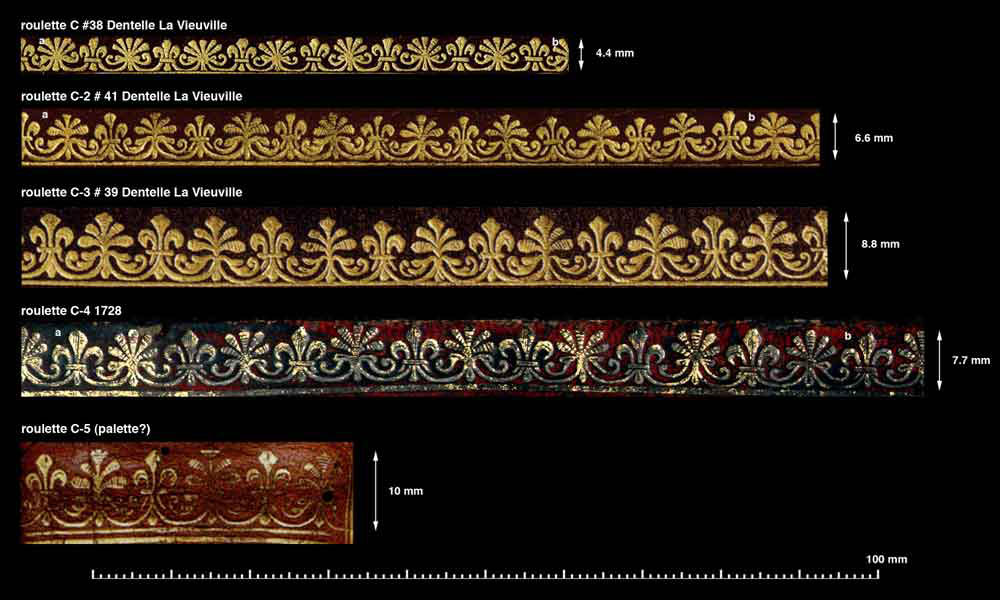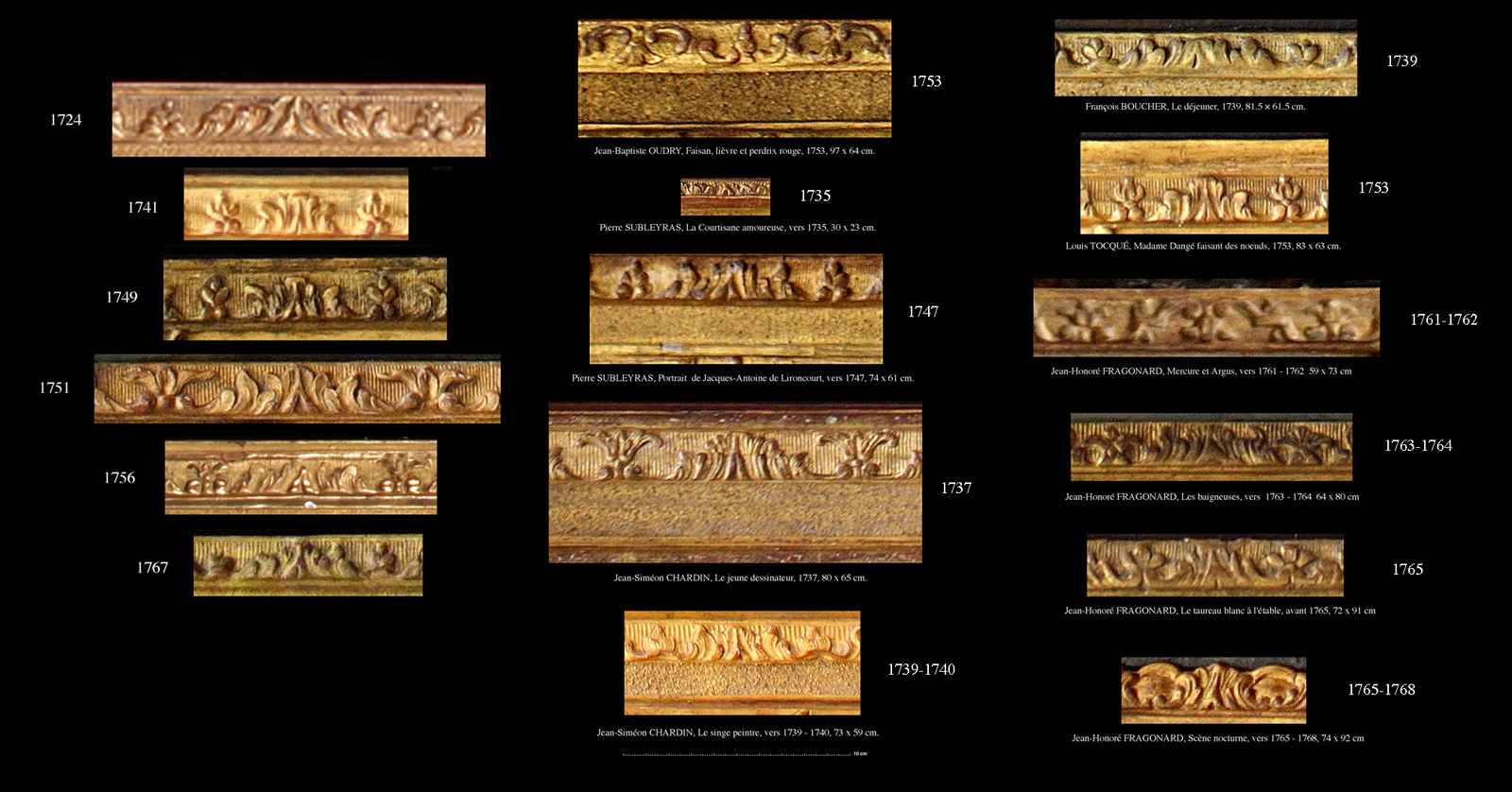|
In my search for high resolution images of Louis XV picture frames, I stumbled across this advertising image for a 2008 auction: CADRES EXCEPTIONNELS
DE LA COLLECTION GEORGES BAC,
BAGUETTES A DESSIN ET CADRES ANCIENS ET MODERNES
Italiens, français, espagnols, hollandais et d'Europe du Nord des XVIIe, XVIIIe, XIXe et XXe siècles.Held by La société EVE, you can download their catalogue for this auction in which estimates for rare frames ranged as high as 30,000 euros. Lot #155 shown above caught my eye because of the acanthus inside border which we have been researching in the past few pages. Now that I have looked at a lot of these borders, I am able to say that they are also present in present in frames from the Louis XIV era and possibly earlier. This I found astonishing, because it meant that framemakers never failed to include this border with a virtually unchanging pattern for over a century. There were of course some who did not use this pattern however most did. This led me to think that it was a pattern created by some master sculptor of such renown that his borders have been faithfully copied by all those who followed. We see this in the French bookbinding decorations where the style of Le Gascon was copied for more than a century, and we see references to bindings decorated in the style of Le Gascon over a long period. Thus I was tempted to imagine that there must be some sort of clear archetype for the motifs in this border, that was copied over and over with a continuous loss of exactness so that the last borders of this type just barely resemble the first original masterpiece. However this theory was complicated by the discovery of the example above, as it was probably carved somewhere between 1715 - 1723. It could not therefore be the archetype as my research seemed to uncover examples from a much older date, and these, were not as perfectioned as those of Lot #155!
|




